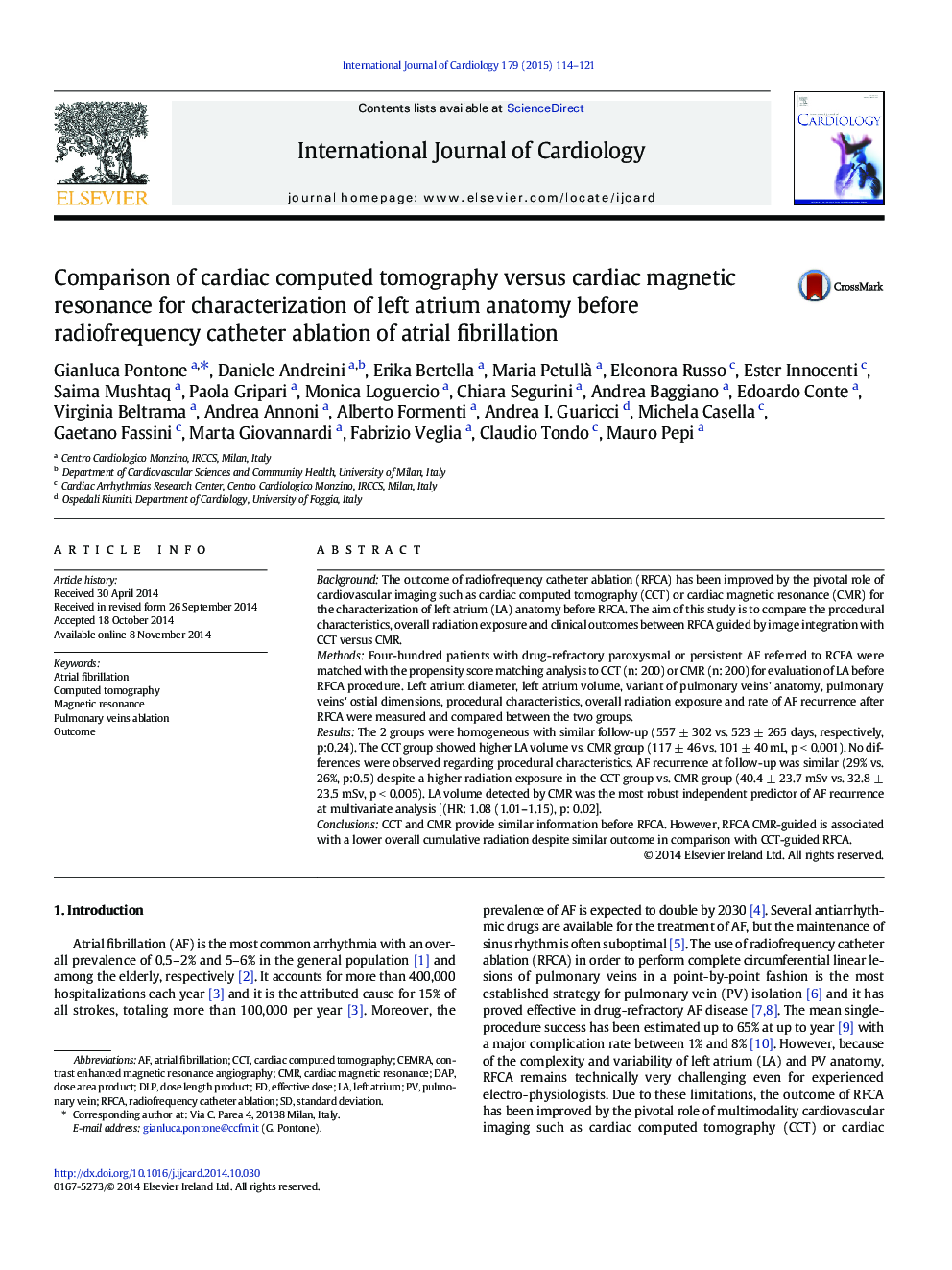| Article ID | Journal | Published Year | Pages | File Type |
|---|---|---|---|---|
| 5968953 | International Journal of Cardiology | 2015 | 8 Pages |
BackgroundThe outcome of radiofrequency catheter ablation (RFCA) has been improved by the pivotal role of cardiovascular imaging such as cardiac computed tomography (CCT) or cardiac magnetic resonance (CMR) for the characterization of left atrium (LA) anatomy before RFCA. The aim of this study is to compare the procedural characteristics, overall radiation exposure and clinical outcomes between RFCA guided by image integration with CCT versus CMR.MethodsFour-hundred patients with drug-refractory paroxysmal or persistent AF referred to RCFA were matched with the propensity score matching analysis to CCT (n: 200) or CMR (n: 200) for evaluation of LA before RFCA procedure. Left atrium diameter, left atrium volume, variant of pulmonary veins' anatomy, pulmonary veins' ostial dimensions, procedural characteristics, overall radiation exposure and rate of AF recurrence after RFCA were measured and compared between the two groups.ResultsThe 2 groups were homogeneous with similar follow-up (557 ± 302 vs. 523 ± 265 days, respectively, p:0.24). The CCT group showed higher LA volume vs. CMR group (117 ± 46 vs. 101 ± 40 mL, p < 0.001). No differences were observed regarding procedural characteristics. AF recurrence at follow-up was similar (29% vs. 26%, p:0.5) despite a higher radiation exposure in the CCT group vs. CMR group (40.4 ± 23.7 mSv vs. 32.8 ± 23.5 mSv, p < 0.005). LA volume detected by CMR was the most robust independent predictor of AF recurrence at multivariate analysis [(HR: 1.08 (1.01-1.15), p: 0.02].ConclusionsCCT and CMR provide similar information before RFCA. However, RFCA CMR-guided is associated with a lower overall cumulative radiation despite similar outcome in comparison with CCT-guided RFCA.
